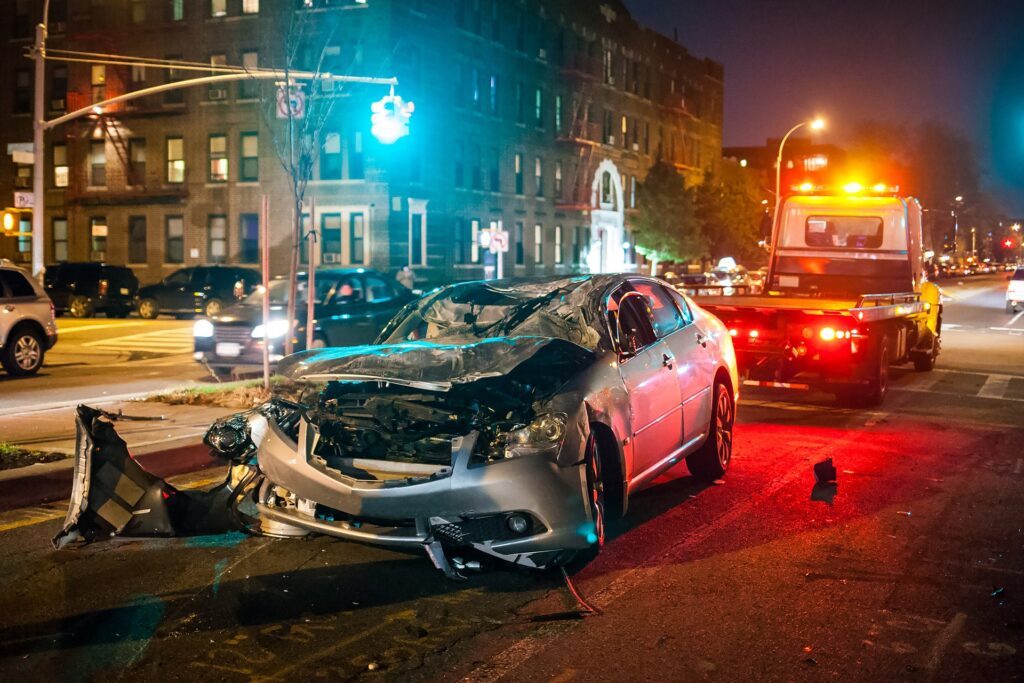You may have been injured in a car or truck wreck and do not know how you’re going to pay for your medical bills, lost wages, and other expenses. You may be wondering if Texas is a no-fault state and how that affects your claim. Here is information that will help you.
Different Types of Fault
There are three types of fault (or liability) depending on which state you live in: fault, no-fault, or a variation. Texas is not a no-fault state or fault state.
We used to be a no-fault state but fortunately stopped using that determination in the 1980s. Under that harsh standard, if a jury found the injured party was even 1% responsible for contributing to the crash, he or she received no money. But being a no-fault state has its problems too.
Texas Uses A Different Formula
Texas uses a modified comparative fault system. That means that if someone is fully or at least 50% responsible for causing a car accident, they (and their insurance company) are required to pay you for the damages they caused.
However, the conduct of all drivers and responsible parties are compared, and the damages are adjusted depending on the percentage of liability assessed to each.
Depending on how the facts are presented, liability could range from a 100-0% determination or less. But someone, some company, or some governmental entity must be found to be at fault and in a specific percentage.
This is a significant issue that can cost the injured person a lot of money. If the insurance company can convince a jury that its driver is only 50% liable, it only has to pay 50% of the plaintiff’s damages. And if it can show he or she is 49% or less responsible, the plaintiff receives zero.
How This Works
Some collisions are open-and-shut, e.g., if you are at a stop waiting for your light to change and another driver crashes into your vehicle.
But if you add other facts, another rear-ender may not be as simple. What if you are driving down a busy road and a pedestrian darts out in front of you, you slam on your brakes, and the other driver hits you? However, what if the pedestrian did not dash across the road, was in a crosswalk, or was wearing red clothes? Or what if the crash happened late at night in an area with no lights? Or it was raining heavily?
There are many facts that must be analyzed.
We have fought this issue hundreds of times over the past 42 years. For example, our client may have had one beer or glass of wine. That has no bearing on the liability decision, and we refuse to let that evidence come into play.
But in a wrongful death lawsuit we filed, a truck driver who died had even used mouthwash, his autopsy detected alcohol in his blood, and the insurance company argued that he was responsible for running into a stopped truck that had run out of gas on a highway. We refused to let the company get away from that ridiculous assertion, and the case settled just before trial for several million dollars.
The legal process for showing who is more responsible for causing the crash can be complicated. There is no one system or equation used. We have discussed this topic in more detail here:
https://berensonlaw.com/how-is-fault-determined-in-a-car-accident-in-texas/
Often, the opposing insurance company will not agree that its driver was 100% liable and will reduce its settlement offer substantially. The case may be worth the amount of insurance the at-fault driver purchased – if it makes an offer at all. Your only option is to file a lawsuit and go to trial.
What a Good Personal Injury Lawyer Can Do
He will find all evidence that supports your case for liability. Not presenting key facts is a critical mistake that can be made unless you hire an aggressive car accident attorney.
For example, he or she can locate proof that that person was speeding, had just changed lanes, or was looking down at their cell phone.
They can also look for other facts that may have caused or contributed to the crash. For example, the other driver was 16 and had just gotten his license, was with his girlfriend with friends in the back, and they were looking at a YouTube video. Add that they had been drinking or using drugs.
What Damages Can You Claim?
There are different types of damages you could seek when filing a claim for a car accident. The main one is your medical bills, including doctor visits, medicine, therapy, surgeries, or medications. You can also claim a loss of wages if you had to take time off of work to go to your appointments or heal from your injuries. A loss of wages may include not only your earnings but also any bonuses or raises you missed.
If there was any damage to your car and belongings, rental car, towing, and storage, these are applicable damages.
Pain and suffering is valid as well.
You can discuss all the damages that you might be able to claim with your personal injury lawyer.
In Texas, you are required to purchase car insurance before you drive. The minimum amount of coverage you can have is $30,000 per person in bodily injury coverage, capped at $60,000 per crash, as well as $25,000 for property damage coverage. If you get injured in a car accident in Texas, you will seek damages from the other driver’s insurance company, not from the driver. You can sometimes also seek payment from your own policy.
Contact Berenson Injury Law
If you were injured in a car, truck, 18-wheeler, motorcycle, or pedestrian accident – the only law cases that we handle – and need legal help, we are here to help you. Berenson Injury Law has been representing thousands of injured Texans for over 40 years. Call us at 817-885-8000 or get in touch on our website.


